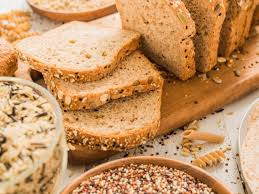WEIGHT LOSS vs FOOD MYTHS
By NETHRA VIJAYAKUMAR
Weight loss, refers to a reduction of the total body mass, by a mean loss of fluid, body fat (adipose tissue), or lean mass (namely bone mineral deposits, muscle, tendon, and other connective tissue). Weight loss can either occur unintentionally because of malnourishment or an underlying disease, or from a conscious effort to improve an actual or perceived overweight or obese state.
Myth: You have to give up all your favorite foods, to lose weight.
Fact:
You don’t have to give up all your favorite foods when you’re trying to lose weight. Small amounts of your favorite high-calorie foods may be part of your weight-loss plan. Just remember to keep track of the total calories you take in. To lose weight, you must burn more calories than you take in through food and beverages.
TIP:
Limiting foods that are high in calories may help you lose weight.
Myth: Grain products such as bread, pasta, and rice are fattening. You should avoid them when trying to lose weight.
Fact:
Grains themselves aren’t necessarily fattening—or unhealthy–although substituting whole grains for refined-grain products is healthier and may help you feel fuller. At least half of the grains you eat should be whole grains. Examples of whole grains include brown rice and whole-wheat bread, cereal, and pasta. Whole grains provide iron, fiber, and other important nutrients.
TIP:
Try to replace refined or white bread with whole-wheat bread and refined pasta with whole-wheat pasta. Or add whole grains to mixed dishes, such as brown instead of white rice to stir fry.
Myth: Dairy products are fattening and unhealthy.
Fact:
Dairy products are an important food group because they have protein, that your body needs to build muscles and help organs work well, and calcium to strengthen bones. Most dairy products, such as milk and some yogurts, have added vitamin D to help your body use calcium. Dairy products made from fat-free or low-fat milk have fewer calories than dairy products made from whole milk.
TIP:
Adults should have 3 servings a day of fat-free or low-fat dairy products, including milk or milk products such as yogurt and cheese, or fortified soy beverages, as part of a healthy eating plan.
If you can’t digest lactose, the sugar found in dairy products, choose fortified soy products, lactose-free or low-lactose dairy products.




Most of the people believe eat less then lose weight..start with small amounts of your favorite high-calorie foods may be part of your weight-loss plan..
ReplyDeleteThanks Nethra... Good one you sharing
Thank you Anna😊
Delete